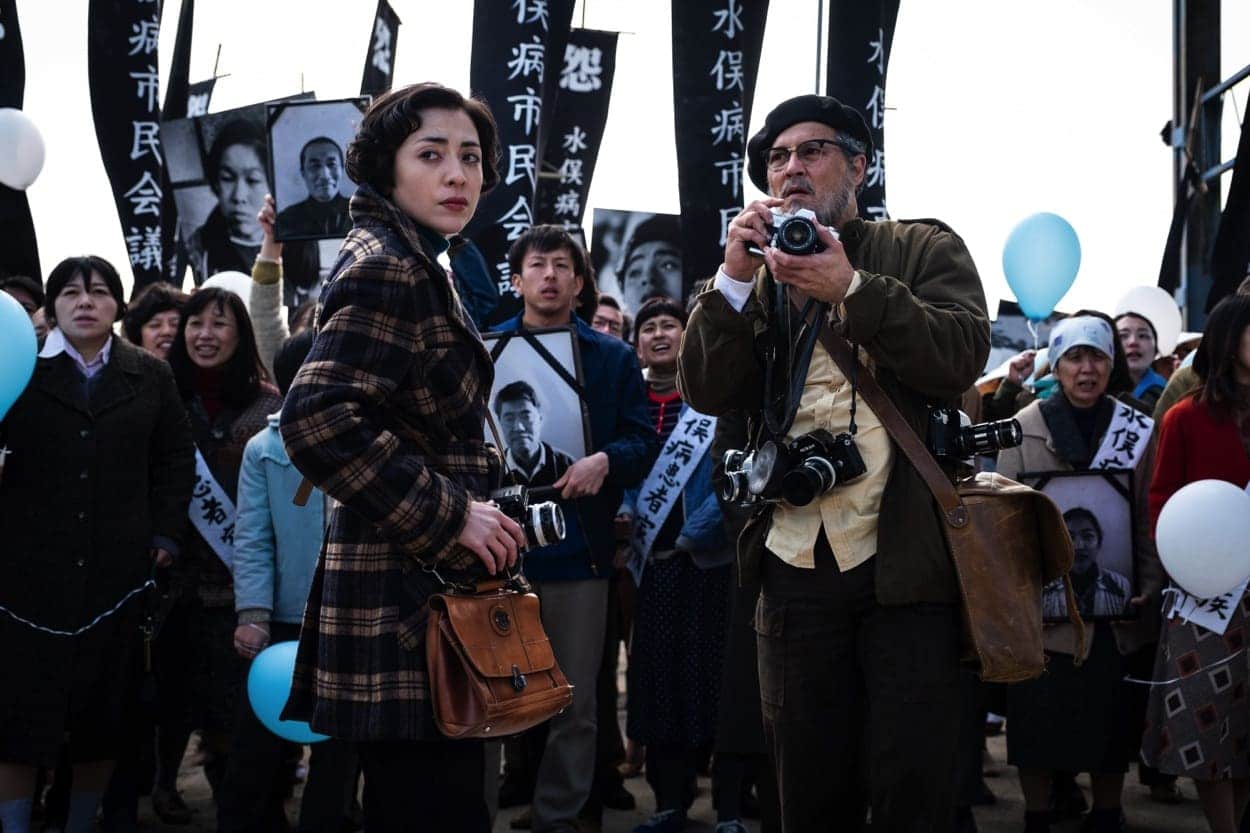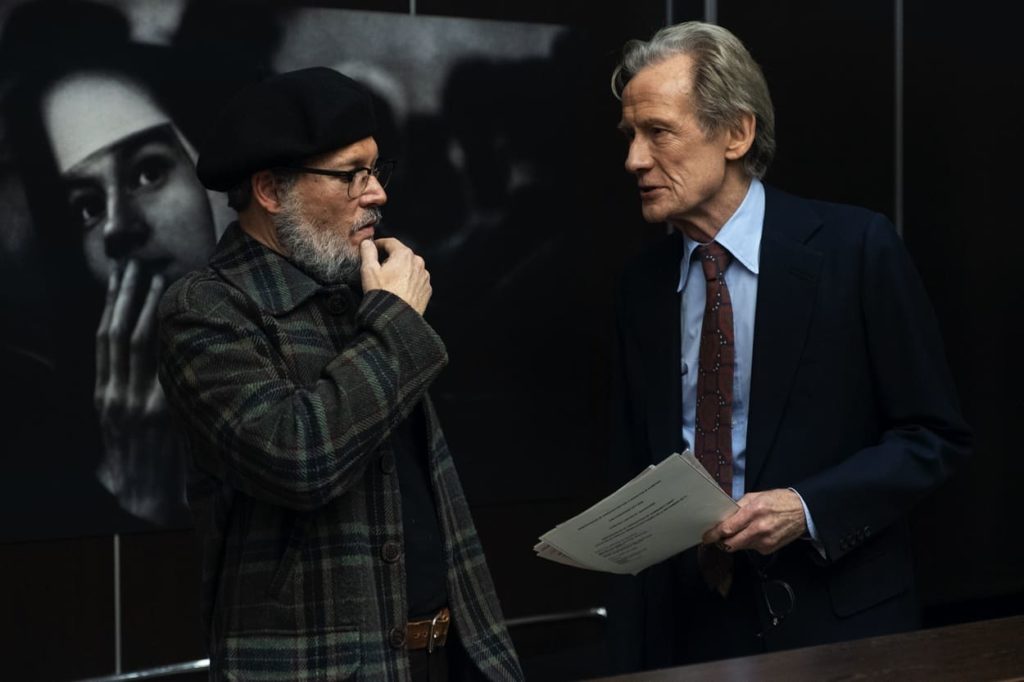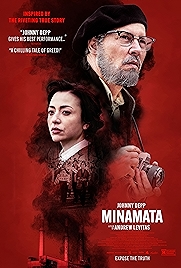From its title right through to its last gasp, Minamata, a drama based on real events, insists that it isn’t about the photographer W Eugene Smith. But it is.
Smith was a photographer who’d distinguished himself in the Second World War and then returned to lay down many of the ground rules of photojournalism at Life magazine, he and it in a creative lockstep from the 1940s till the 1970s, when it ceased weekly publication and he went on to the great darkroom in the sky.
The film picks up Smith at the end of his career in 1971: old, drunk, broke, selling off his gear to pay his rent and barely able to command the attention of Life magazine editor Robert Hayes, who tolerates Smith on account of his reputation as one of the great figures of modern-day American photography.
Then one day, in classic redemptive style, Smith is handed a chance of “one more shot” by a young Japanese woman who’s arranged an interview with him under false pretences. She’s not there to get an endorsment for Fuji colour film – Smith only takes black and white pictures anyway and is mystified he ever agreed to the meeting, if he did – instead she’s there to talk Smith into coming to Japan to take photographs of the people of the Minimata bay area, who are plagued by diseases of the central nervous system.
These are caused, the locals are convinced, by the chemical waste being pumped into the local water courses by the Chisso Corporation. Chisso refuses to acknowledge even that there’s a problem, though the effects – children born with deformities, adults succumbing to contorting spasms – extend even to animals, hence one of the syndrome’s nicknames, Dancing Cat Disease (“dancing” being quite the euphemism, as actual archive footage of a cat contorted into hideous shapes shows).
The toxic chemical in question turned out to be mercury, a bioaccumulant, but no one knew that at the time. What they did know was that the company, responsible for the ongoing pollution, was staying tight-lipped while the situation got steadily worse.
Smith arrives in Japan, to find activists picketing the plant and organising, and he goes to work, while Chisso’s president keeps a wary eye on the American blow-in and prepares for foul play.
Three stories develop – of corporate malfeasance, environmental disaster and personal redemption – carefully woven together as if by a parent trying not to admit that one child (Smith) is the favourite. It’s a strangely old fashioned movie, in many ways, reminiscent of 1979’s The China Syndrome or 2000’s Erin Brockovich, and director and co-writer Andrew Levitas is comfortable enough with that notion to use dramatic compression (he’s probably making odd incidents up, in other words) to get across points that would simply bog down the narrative otherwise, like when Smith almost accidentally finds a dossier that handily explains the extent of the company’s guilt.
It’s a bearded, grey-haired, chunky Johnny Depp playing Smith, the film as much a redemption for him as for his character. He’s good. Very good. There’s the odd Deppish Mannerism – he’ll fill whole movies with these if the wind is coming from the wrong direction – but most of them he catches on the way out and repurposes into something Smith might do – a drunken mumble, maybe.
The adjacently named Japanese actor Minami plays redeeming angel Aileen, a woman who treats Smith like a child and will countenance no bullshit, but sweetly. Bill Nighy makes a decent fist of the American accent (mostly) and of playing Hayes, an old school editor of the All the President’s Men variety, and singer Katherine Jenkins makes her acting debut as one of his editorial team. Odd casting, both of them, but effective. And Kiroyuki Sanada does what he can with an underwritten role as the Japanese activist who’s been trying to hold Chisso’s feet to the fire.
It’s a well-upholstered Hollywood sedan of a movie, with a classic three act structure working hard to avoid the “white saviour” tag, shot by DP Benoît Delhomme with an eye on classic photographic composition – so often on the thirds – and with a soundtrack by Ryuichi Sakamoto that’s particularly good at the redemptive end of the drama.
And there is plenty of redemption being shared out. Even Chisso boss Junichi Nojima (Jun Kunimura) gets some. He’s less your scheming megacorp master villain than a man led astray by company loyalty. Whether the film can redeem Depp – those wife beater allegations were swirling when Minamata was slated to debut – remains to be seen.
Minamata – Watch it/buy it at Amazon
Minamata: The Story of the Poisoning of a City, and of the People Who Choose to Carry the Burden of Courage. Pictures and words by W Eugene Smith and Aileen M Smith. Buy it at Amazon
I am an Amazon affiliate
© Steve Morrissey 2021


